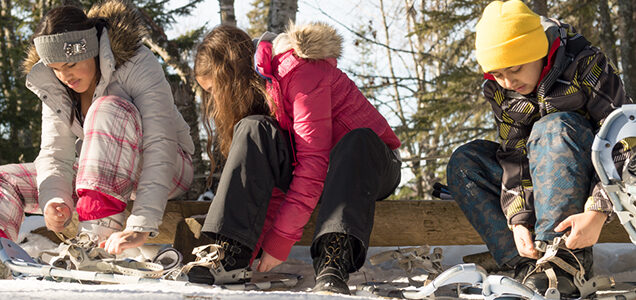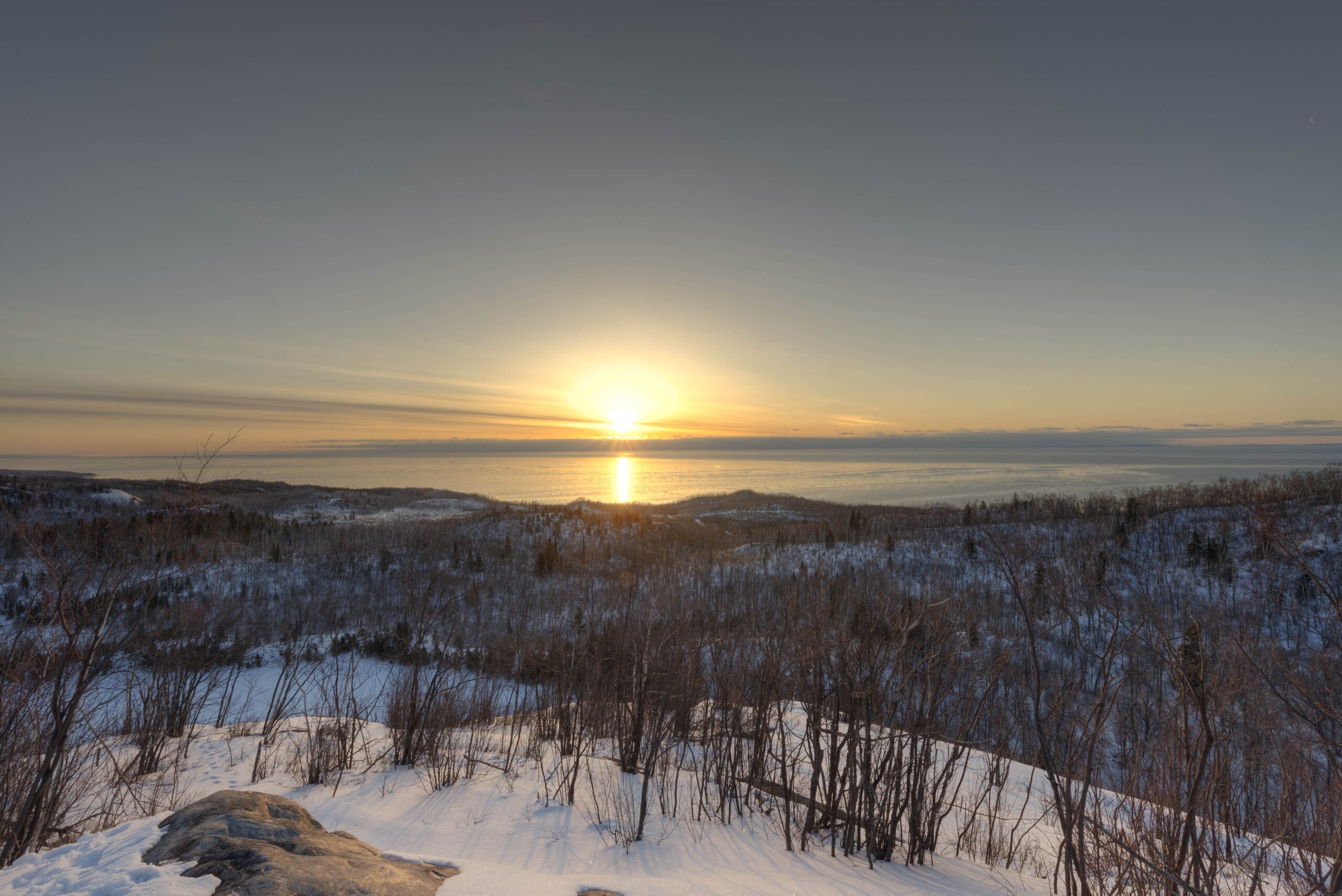Class Details
3 Hours
4th Grade to Adult
hard

How do snowshoes give us more opportunities to explore the Lake Superior ecosystem in winter?
After a short introduction to several different types of snowshoes, students use snowshoes provided by Wolf Ridge to travel to one of several Superior Hiking Trail overlooks above Lake Superior. Taking breaks along the way, students will discover neat features of winter, like snow and ice patterns, animal tracks, and plants. Routes leading over one of Wolf Ridge’s two frozen lakes, through the frozen wetlands, and possibly an overview of the lake, will provide plenty of opportunities to discover this winter landscape as students stay far away from designated trails. Students will also participate in an outdoor physical activity that promotes a healthy relationship between people and the environment.
Concepts
- Outdoor Recreation- Using physical skills allows us to reach remote natural areas, and gain a sense of place.
- Science and Technology- Humans adapt to their surroundings by observing and applying basic scientific principles.
- Ecosystems -All living and nonliving components of an environment interact with one another to form an ecosystem.
Outcomes
- Compare and contrast different materials and styles of snowshoes and bindings.
- Demonstrate the ability to maneuver across the snow on snowshoes.
- Evaluate the advantages of snowshoes for winter travel.
- Note unique natural features in winter like animal tracks, birds, snow and ice patterns, and plants, and connect how they connect to the Lake Superior region ecosystem.

